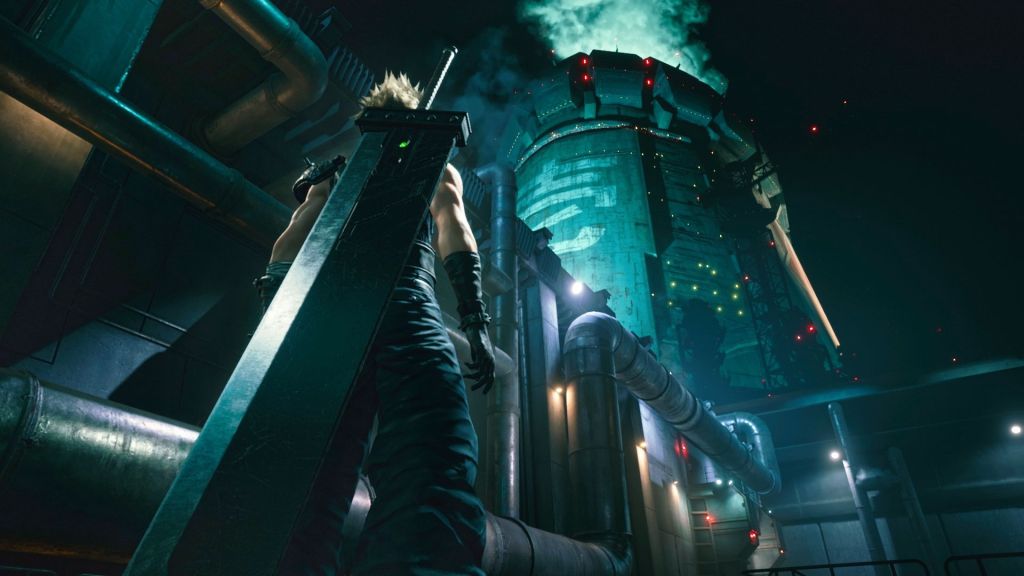
When myself or one of my colleagues reviews a game such as Final Fantasy VII, there is a template by which we record our findings. We will often base the success of the game on narrative, aesthetic, gameplay, sound quality and replay-ability. This isn’t groundbreaking, it’s a tried and tested method. Which is often the best way to give gamers who will potentially purchase a title the info they need. With this information, they can make a reasonably informed decision. However, when UX researcher looks at a game, they do so through a different lens.
These researchers look at games from a different perspective, looking at the most intricate details of their design. Their goal is to look at user experience within games and gain human insights surrounding how the game is played, Making sure that the product is fit for application before it reaches the shelves and digital stores. In short, they study human behaviour when playing games and optimise the user experience (UX) for primarily everyone within the product’s target demographic but also for anyone else who wishes to play.
Key areas that a UX researcher might target when looking at a game will range from accessibility for all players, the usability of the product. The “pain points” which are essentially points in the game that cause frustration or confusion. Or perhaps the drop off points where players are likely to stop playing the game altogether. This isn’t an exhaustive list but gives you a taste of what frame of mind these researchers operate in.
 Ella Walsh (24) – A UX researcher based in Belfast, Northern Ireland
Ella Walsh (24) – A UX researcher based in Belfast, Northern Ireland
We are blessed to have access to a very talented UX researcher who was willing to sit down and give us some insight into their process. Ella Walsh (24) is a UX researcher based in Belfast. She works for Go Testify Ltd. A player-first company who specialises in helping game studios transform how they validate their game during development to ensure players are at the heart of their design decisions. She’s often busy assisting global game studios with player-first reports, designing new innovative AI, plus writing a book on accessibility in games development. So we thank her very much for her time, we realise that it is precious.
She sat down with us to run through the new demo for Square Enix’s remake of the 1997 classic, Final Fantasy VII. She admits that this game is very much not her cup of tea. In fact, she has never played a game in the series ever. She often opts for more chilled and relaxed games. For context, her favourite games of last year were Obsidian Entertainment’s The Outer Worlds closely followed by Untitled Goose Game. Though she put her preferences to one side and tackled this one head-on. So without further delay, here is a UX researcher’s review of Final Fantasy VII.
Accessibility
We begin with Ella’s speciality subject, accessibility. Simply, this refers to players being able to play the game and access all the different assets that a conventional player will be able to. This parameter aims to measure how accessible the game is for those with hearing or visual impairments, lesser cognitive function or lesser motor skills or mobility than the average player. These are the most common considerations, however, this is by no means all the groups of players that games should be accommodating.
In reference to Final Fantasy VII’s demo, there were a plethora of accessibility concerns. One being that the game offers no option to change colour or contrast options in the options menu. This means that those who are visually impaired or colourblind will not be able to play this version of the product. Thus alienating a potential set of consumers entirely.
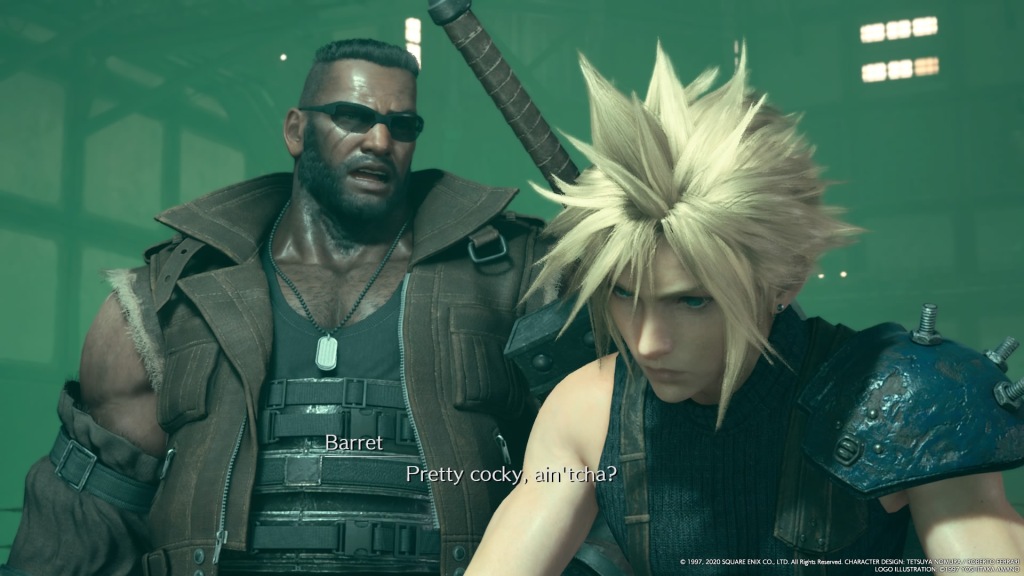 subtitles move at one set pace. Not ideal for all players!
subtitles move at one set pace. Not ideal for all players!
Another area of concern was that the subtitle was one set speed. Meaning that those with trouble reading due to cognitive impairments, alongside those who are able to read at a much quicker pace will often find themselves frustrated when watching cut scenes. A function that allows you to move text on with the action button when you have finished reading the text would have solved this issue.
Access Denied?
Another issue raised by Ella was the loud and intense music that accompanies the actions on screen. Audio cues were hard to hear and infrequent throughout. Meaning that those who are visually impaired and rely on these cues would not have been able to reliably progress through the game.
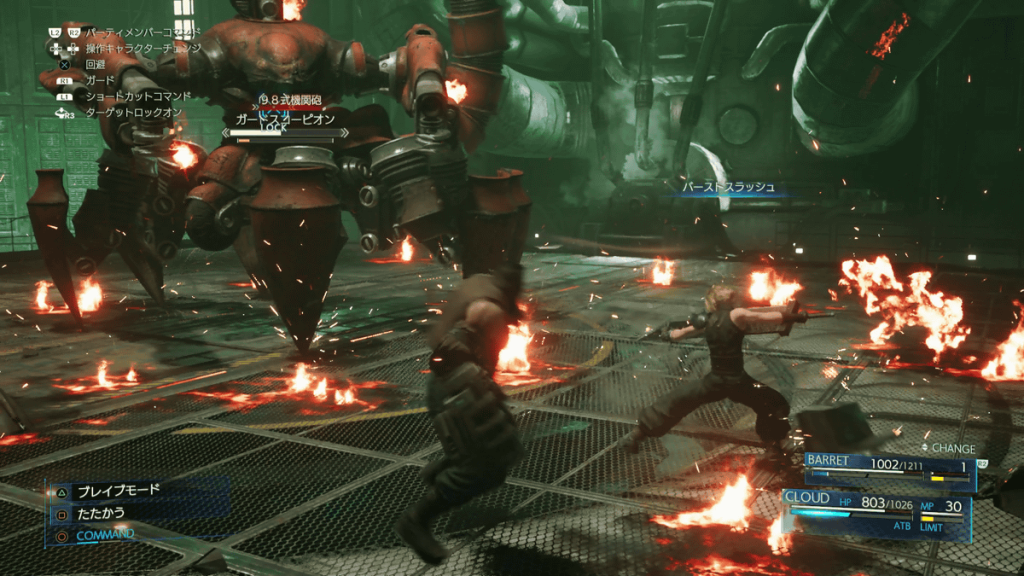 The high octane action and loud music renders any audio cues present as ineffective.
The high octane action and loud music renders any audio cues present as ineffective.
Then lastly for accessibility, Ella stated that there were no alternative control schemes offered for players with less mobility, motor function or limb function. Meaning that Final Fantasy VII all but excludes them from the potential player base.
As an overall view of accessibility for this demo, Ella stated that this was a highly inaccessible title in it’s current state. She also said that the game may possibly have more functions available upon full release.
However, as this is a way to market the product and allow players to test if the game is for them. This may be enough to push these players that need special considerations away altogether. If the developer is to gain these players’ trust. They will need to adopt a player-first mentality when designing their games.
Usability
Moving onto another chunky section of UX researcher’s considerations, usability. This pertains to how a player plays and reacts to the game’s instructions. How narrative affects their actions, how well the mechanics work or how well explained the controls are.
With regards to Final Fantasy VII’s narrative, Ella suggests that the developers have assumed that the player has background knowledge of the title. The motives of the player, Cloud, are never well explained until around halfway through the demo. She also suggests that the morality of Cloud is questionable and the player is unaware if they are playing the bad guy or the good guy. Ella does concede that this may be intentional to draw players in to buy the full release.
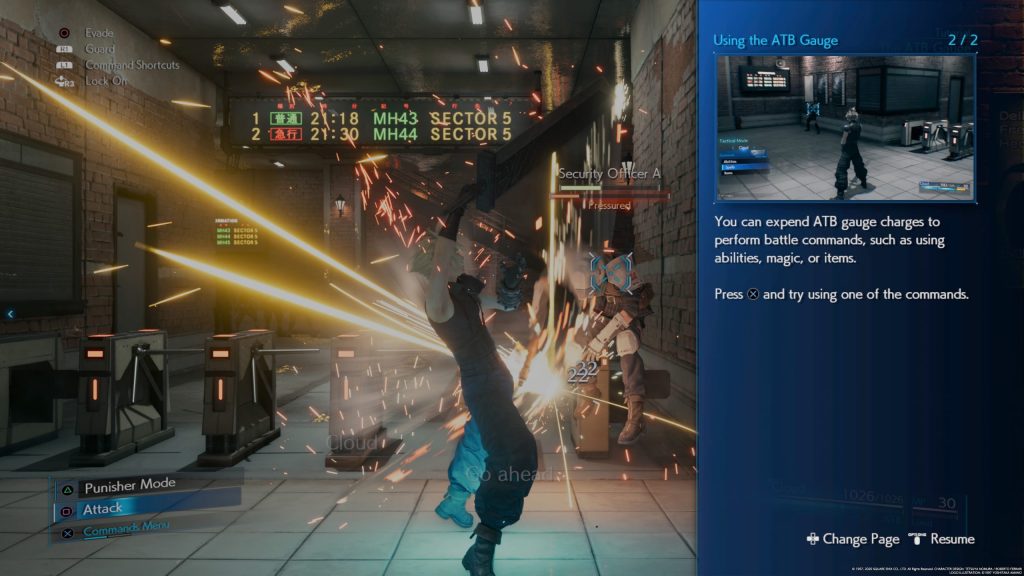 For the love of god, what is the ATB gauge?
For the love of god, what is the ATB gauge?
Then moving on to the controls and tutorial aspects. The tutorial is placed in an area where actions have consequences. Therefore this can be a drop-off point for players as they want to learn in a safe environment. At their own pace with static, non-threatening targets. Ella also states that the tutorial assumes knowledge from the player. Never explaining what ATB stands for in reference to the ATB gauge.
Rushed and frantic Tutorial?
The tutorial instructions also interrupt the action regularly. Not allowing new players the ability to fully implement the last set of instructions that they were given. whilst some aspects are not covered in the tutorial at all. Most notably the command menu where you can access items spells and special actions. The way to use this menu is never addressed as the game makes assumptions the player will be able to handle this without instruction.
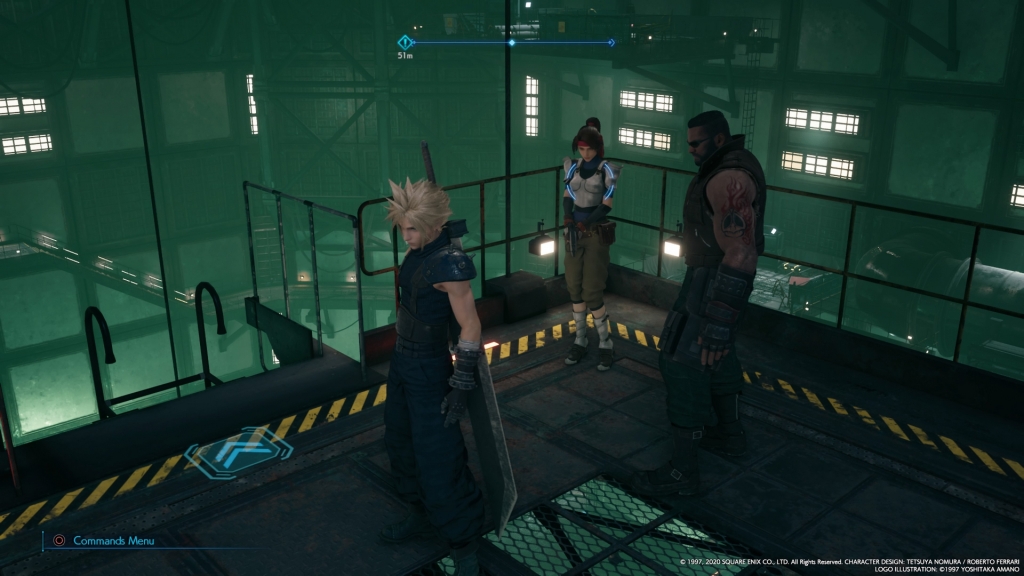 The waypoint shows a rough direction but could be much more clear.
The waypoint shows a rough direction but could be much more clear.
Then a final point, Final Fantasy VII’s map and way-point system is not clear. The way-point marker doesn’t clearly show where the player needs to go to during the demo. Plus the map makes a strange design choice that is never explained. Yet completely against the conventional approach of other mainstream titles. The map allows you to see the steps you have made rather than showing either nothing or alternatively a path to the objective. This is a design choice that can cause confusion unless addressed, which it wasn’t.
Overall, the usability of Final Fantasy VII’s demo is moderate to poor. It has a clear tutorial for it’s many mechanics for the most part. However, the tutorial is constantly interrupting the player. It is also carried out in a hostile environment where players are urged forward towards a goal without time to test or master the instructions being given. Plus the way-finding system is far too obtuse and makes it easy for players to lose their way or unintentionally backtrack. For a triple-A title, these flaws in usability should not be occurring. With a player-first mentality when developing. These types of issues are less likely to occur.
UI
Now that we have hit the two main categories, we move on to UI, Customisation, drop-off risk, progression models and monetisation. Beginning with UI. This of course stands for user interface. This pertains to the menu, HUD and how the game displays information to the player. Within FFVII the UI had its issues. One key issue was the sheer volume of information that is on screen. Take the initial tutorial screen that appears as you begin the demo.
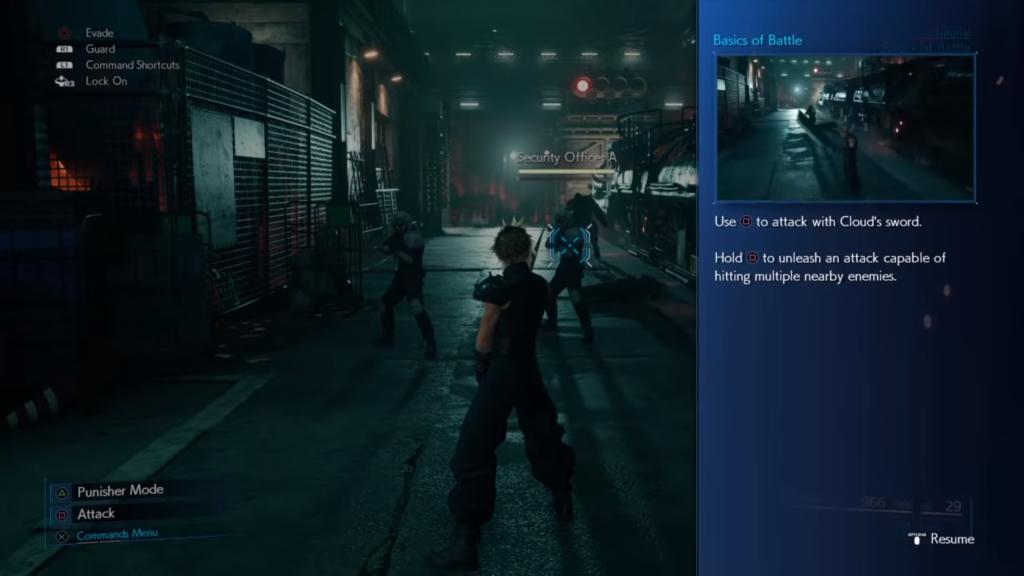 The video draws your attention before you can take note of the top left control scheme.
The video draws your attention before you can take note of the top left control scheme.
The player is immediately presented in the top right with a series of buttons and their functions. In the bottom left is a command menu that, as aforementioned, is not explained. Then there is a tutorial that is explaining the basic steps of combat. All the while there is a video presentation showing a demonstration of using attack commands. This all fights for your attention at once with the video being most likely to gain it due to its dynamic nature. So if you focus to the right of the screen, read the tutorial for combat and move on. Then the left-hand sides button commands disappear and do not reappear. Meaning it is very easy to miss these entirely. Not to mention at this point the options menu is not available until you progress further. Meaning there is literally no way to access these commands again without moving on.
An Irritating Interface?
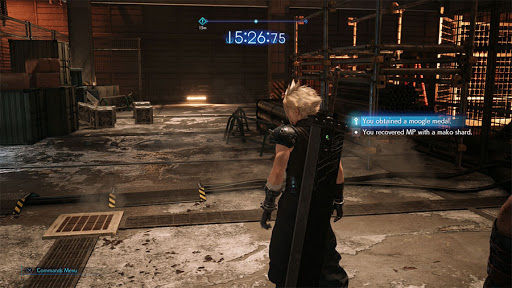
Don’t expect the text to your right to hang around too long!
The player also will find that the after-battle information which displays their spoils such as EXP, items acquired and currency gained is fleeting. The information, although present, does not stay on screen for longer than about three seconds. This gives the player no time to take stock of what they have gathered and therefore can cause frustration. Players may be unaware of potions or ethers they acquired that would aid them in their next encounter. Thus giving them an unwarranted difficulty spike that is through no fault of their own.
Then finally we have the action button interface. Players are instructed early in the demo that they can interact with doors through the action button to open them. However, the game fails to mention that only the doors that are highlighted with the prompt to action them are accessible. This seems straightforward, however to simply suggest that doors can be actioned this way with no differentiation causes players to think all doors visible are accessible. Which can lead to frustration or confusion. This can be addressed through simply showing the prompt the door needs to have clearly on the tutorial segment.
Progression Model and Conditioning
The progression model within games is essentially how the player develops and grows their character to be stronger and more able to handle the scaling difficulty of the title. Whist conditioning pertains to how the game treats the player when carrying out desirable and undesirable behaviours. For example in a stealth game, all guns blazing approaches are punished with detection and higher numbers of enemies to deal with at once. Whilst a more cautious and planned approach will be rewarded with an easier run through the level and potentially higher in game rewards.
 Although level information is available in the character menu. During play this never appears.
Although level information is available in the character menu. During play this never appears.
In Final Fantasy VII, the player does grow in levels throughout the demo and this is shown through the aforementioned quick pop-ups. However, this growth in level or strength doesn’t resonate with the player. They are never shown the changes this will provide to their character on screen such as buffs or new movie sets. This information is displayed the same way as gaining an arbitrary bit of currency or an item pickup.
Therefore the player is conditioned to view it as such. So the game for that reason does not use this medium well to make the player want to continue grinding out levels. The lower levels are where the game can offer the player a multitude of rewards. Making them more willing to continue as the frequency of rewards lessens at higher levels. Final Fantasy VII doesn’t carry this action out well at all and therefore the progression model is flawed.
Customisation Options
In terms of the ability for the player to customise their experience, Ella raised some issues. Firstly, the player is cast as a set character which is unable to be customised aesthetically. The player is never given a choice in the matter and for those that want a more personal experience where they can project themselves onto the character they are controlling this can cause issues. Ella however again concedes that this may be an intentional direction by the publishers.
 You are Cloud, no exceptions, no customisation.
You are Cloud, no exceptions, no customisation.
However, a function that the player is denied of that is available in the 1997 release, is the ability to name their character. Players are instead forced to play as Cloud Strife as opposed to their own custom name. This further alienates the player and makes the demo less of an experience they can place themselves in and rather an interactive storytelling device.
Monetisation
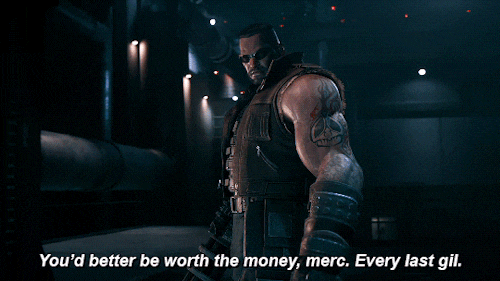
oh yeah Barrett, by the way. What is a Gil?
This of course refers to how the game handles currency and economy within the games world. Ella had a brief point to make in regard to this as it is seldom mentioned throughout. Due to the nature of the demo being an environment where the player has no capacity to use money. It is strange that the developers would not simply remove the asset from the demo. It has no purpose and only serves as a point of confusion as the currency is never addressed within tutorials or game mechanics. This is further exemplified when Barrett mentions that Cloud’s employment “better be worth every last Gil.” Gil is the currency of the world. However unless contextually assuming this is what the character meant, there is no moment where the game confirms or addresses this.
Drop Off Points
Lastly we have drop off points. These are the moments within the experience when players are most likely to sop playing the game. This is often due to frustration, confusion or difficulty beyond the players ability. Ella states that within an hour-long demo of this nature, there should really be no drop-off points. However, she did mention that the difficulty spikes towards the end when fighting the boss of the area is a potential drop-off point. This is due to the rather flimsy nature of the enemies that proceed this fight. Meaning players are not gradually introduced to harder enemies as they go. Instead they are asked to defeat a hulking opponent after only battling weak opposition.
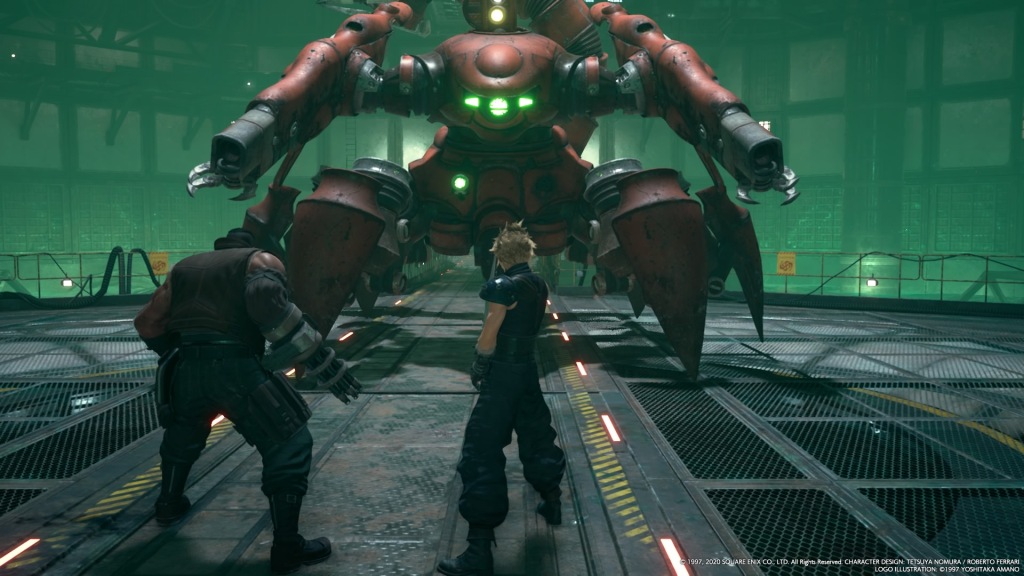 The hulking boss you’ll face in the demo. Big fella ain’t he?
The hulking boss you’ll face in the demo. Big fella ain’t he?
She also suggests that in this battle there are a lot of audio and visual stimuli happening all at once. So this can be an overwhelming event for players unequipped for the challenge and therefore adds to the likelihood of a drop off in this area of the demo.
Too Big To Fail?
So there you have it, a UX review of Final Fantasy VII. It’s incredible to gain insight to how these researchers think. On a base level as journalists we were very pleased with how FFVII turned out. If you need any evidence of that check out our takeaways from the demo here. Yet when looked at from a user experience perspective, it’s interesting to see just how flawed this experience is.
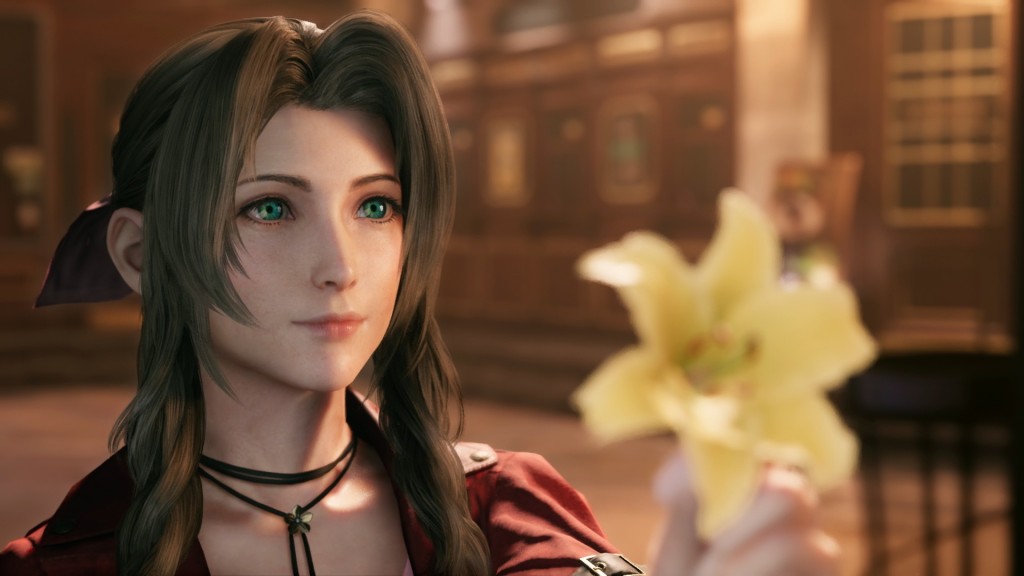 A shame that so many players wont get to experience Final Fantasy VII. Nothing can take away from the aesthetic. It’s fantastic
A shame that so many players wont get to experience Final Fantasy VII. Nothing can take away from the aesthetic. It’s fantastic
What is perhaps most shocking is the lack of accessibility that Final Fantasy VII has for less able players. It seems that the right precautions have not been taken to include these players. Therefore Square Enix have perhaps not intentionally, but certainly have alienated these players and made their product unplayable for them. It’s striking that with the gargantuan budgets that these companies have at their disposal, that they cannot implement tools to aid these players.
Perhaps there is a mentality present that despite the flaws of this title that the nostalgia will carry players through, that the production value and beautiful aesthetic will cast a shadow on the less desirable details. Or perhaps there is a feeling that this title, a remake of the PS1’s biggest title ever, is too big to fail. What we do know is that no game is perfect as Ella was shown us.





